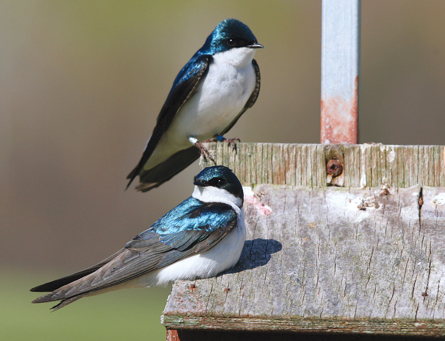Life
Stressed-out bird moms, apes’ memories, stick-wielding parrots and more in this week’s news
Stressed bird moms
Stress may have its upside for parents. More hungry babies meant more stress hormones but also more fledglings for mother tree swallows, an international team reports online June 1 in Biology Letters. Overworked moms put more effort into parenting and raised more chicks successfully than small-brood moms did. Most previous tests with artificially big broods didn’t find overworked avian moms to be any more likely to have higher stress hormones. Those studies, however, didn’t track hormone changes in the same individuals. In the new study, mother birds’ hormone concentrations rose in the chick-enhanced nests. —Susan Milius

Date palm decoded
A draft of the date palm’s genetic blueprint is at hand, work that could greatly simplify cultivating the tree whose sweet fruits have been a dietary staple in arid regions since before the days of the pharaohs. Date palm trees are either male or female, but only females bear fruit. Unfortunately for date farmers, it can take more than five years until a tree is mature enough to flower, revealing its sex. The draft genomes of several date varieties, published May 29 in Nature Biotechnology, reveal multiple genetic changes unique to gender, which may lead to a quick way to determine sex before a seed is planted. —Rachel Ehrenberg
Apes’ delayed recall
A day’s wait and a night’s snooze are good news for apes’ memories. Chimpanzees and orangutans remember which of three cups a piece of food was placed under when tested two minutes later, say psychologists Gema Martin-Ordas and Josep Call of the Max Planck Institute for Evolutionary Anthropology in Leipzig, Germany. Animals’ recall progressively worsens over the next eight hours but fully recovers after 24 hours, the scientists report in an upcoming Biology Letters. As in people, sleep further boosts chimp and orangutan memories, the researchers say, especially if the apes were distracted at the time of learning or recall. —Bruce Bower
Amphibian disease conundrum
The lethal chytrid fungus that ranks as one of the major threats to amphibians worldwide appears to be more prevalent in still-wild, less-disturbed tropical places than in disturbed habitat. This paradoxical finding, from surveys in Brazil, Costa Rica and eastern Australia, highlights the need for understanding the interactions among threats to amphibians, Cornell University researchers report online May 31 in the Proceedings of the National Academy of Sciences. The work does not offer much comfort for imperiled amphibians, though. The combination of disease in the wild plus habitat loss around people doesn’t leave much room for sensitive species. —Susan Milius
Kermit the kea
Although New Zealand’s kea parrots have big — well, parrotlike — curved beaks that would seem to be unwieldy, a kea named Kermit has aced a test of stick manipulation. After seeing Kermit in action, three other captive kea out of five managed to aim a stick into a box with enough control to hit a treat-bearing container instead of an empty one. Biologists haven’t seen these parrots use sticks as tools in the wild, so the birds’ success looks like a sign that they can harness fancy cognitive powers under the right conditions, researchers from Vienna report online June 2 in Biology Letters. —Susan Milius
PARROTING SKILLS from Science News on Vimeo.
Although biologists haven’t seen a kea parrot using stick tricks in the wild, a bird that previously saw a pal work the tool now manages to guide a stick through a hole and punch the correct box for a treat.
Credit: Courtesy of A. Auersperg






